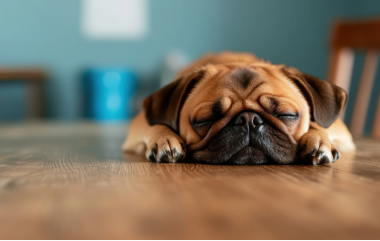Introduction to Animal Sleep Patterns
Animals sleep in ways that can seem strange to us. Some nap for only seconds, some rest with half their brain, and others barely sleep at all. The diversity in sleep patterns across the animal kingdom is fascinating and sheds light on the unique adaptations of different species.
Cats: The Ultimate Sleepers
Cats are known to sleep up to two-thirds of their lives. They dream, twitch, and sometimes even snore, showcasing a sleep pattern that is both intriguing and relatable. Their ability to spend so much time sleeping is a testament to their adaptability and comfort in their environments.
Penguin Power Naps
Chinstrap penguins have a unique approach to sleep, falling asleep thousands of times a day but only for about four seconds at a time. These microsleeps add up to more than 11 hours of sleep per day, especially when they are guarding their nests. This pattern allows them to rest while still being vigilant for potential threats.
Diving into Sleep: Elephant Seals
Northern elephant seals manage with just two hours of sleep a day at sea. They take short naps, typically less than 20 minutes, while diving deep underwater. Interestingly, they enter full REM sleep as they drift down, below their predators, highlighting a remarkable adaptation to their marine environment.
Unihemispheric Sleep: The Walrus Way
Walruses can snooze nearly 19 hours a day on land. In the ocean, they experience “unihemispheric sleep,” where one half of their brain sleeps while the other stays active. This unique sleep pattern allows them to swim and sleep simultaneously, ensuring they can rest while remaining alert to their surroundings.
The Sleeping Habits of Other Animals
- Spiders and REM Sleep: Jumping spiders show signs of REM sleep, including eye movements and limb twitching, suggesting they may dream like humans.
- Bees and the Importance of Dark Nights: Honey bees need sleep to perform their waggle dance, a crucial communication method. Disrupted sleep patterns due to artificial light at night can impair their ability to communicate and find food sources.
- Flat-Faced Dogs and Sleep Apnea: Breeds like pugs and bulldogs sleep more due to breed-specific sleep apnea, which can lead to increased daytime sleepiness and shorter life spans.
- Pandas and Zoo Life: Pandas in zoos outside their natural latitude can experience something akin to jet lag, with changes in daylight and temperature affecting their rhythms and leaving them sluggish.
- Bears in Hibernation: Despite hibernating, grizzly bears’ internal clocks continue to run, with their energy cycles following a daily rhythm even through months of deep sleep.
- Termites and Continuous Activity: Worker termites are active around the clock, guided by their body clocks but not requiring a traditional sleep cycle. They continuously chew through wood, showcasing a sleep pattern vastly different from humans.
Conclusion
The sleep patterns of animals are as diverse as the species themselves, ranging from the brief power naps of penguins to the prolonged sleep of cats. Each species has evolved unique adaptations to its environment, highlighting the complexity and variability of sleep in the animal kingdom. Understanding these patterns not only fascinates but also informs us about the intricate relationships between sleep, environment, and survival. By exploring how different animals sleep, we gain insights into the natural world and the remarkable strategies that have evolved to ensure the survival and success of species across the globe.

